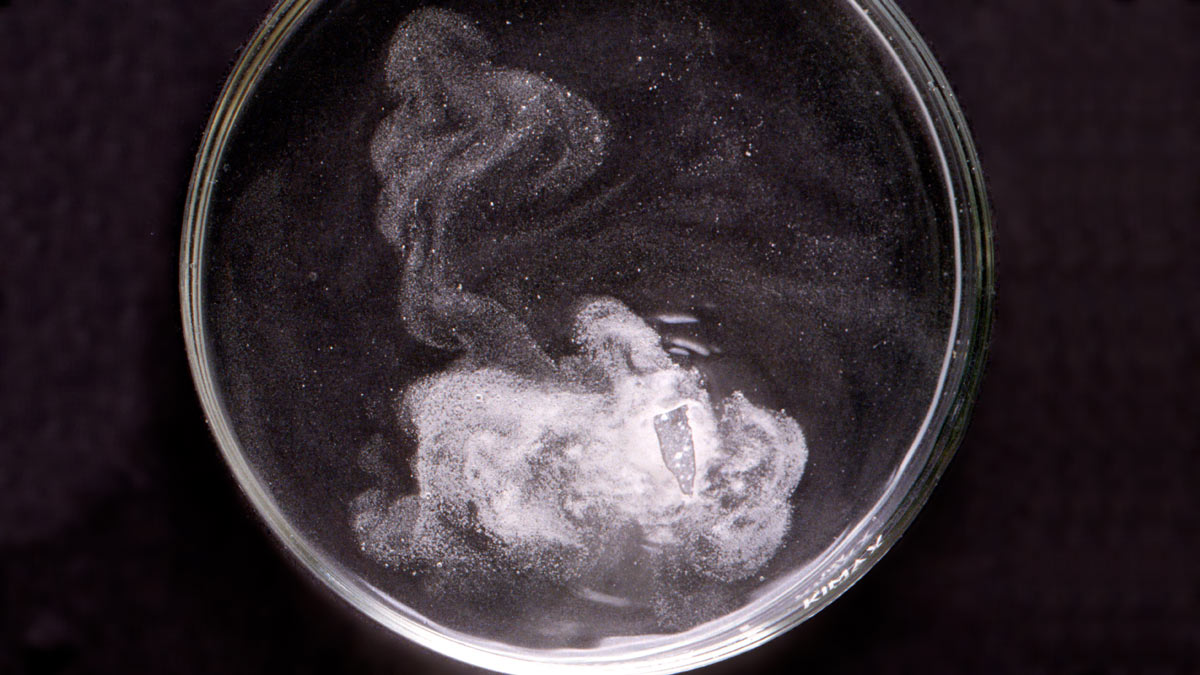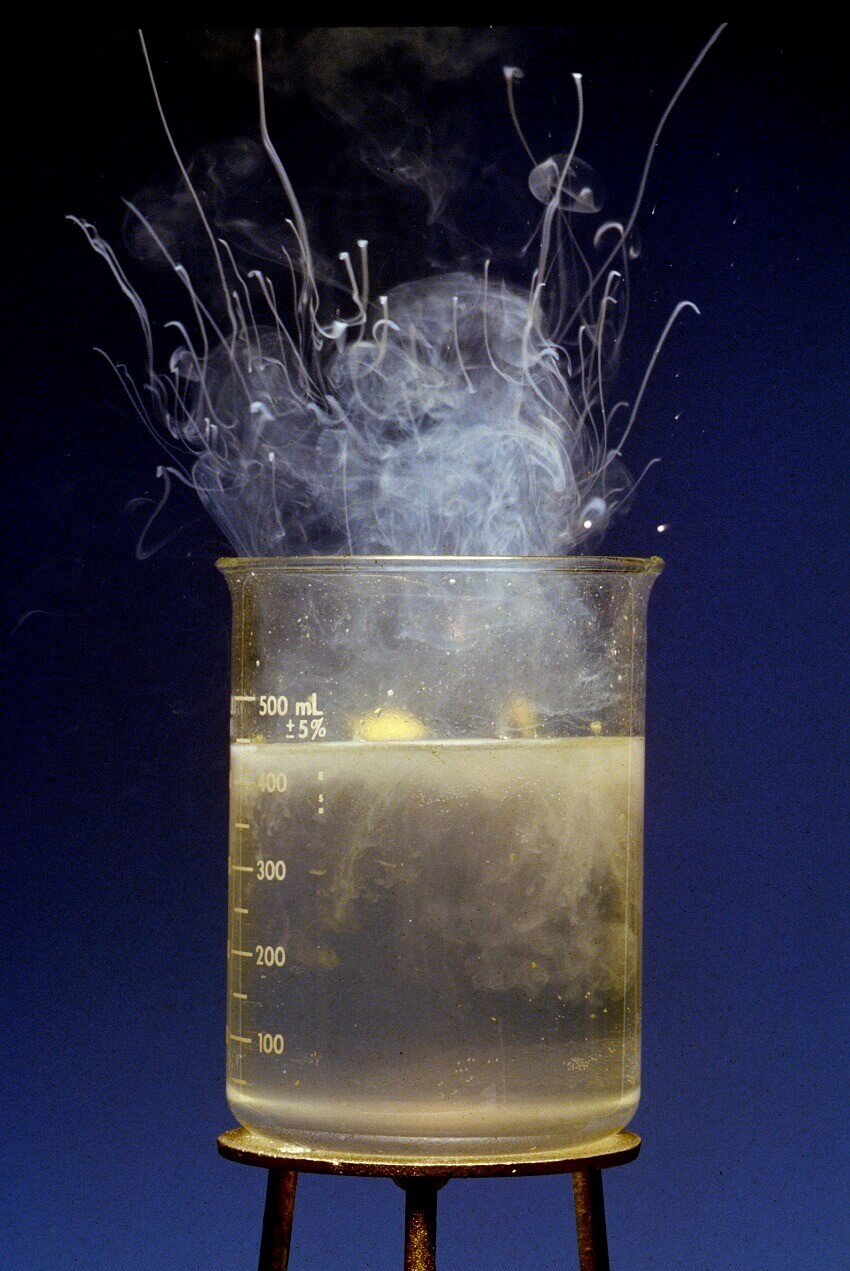It is possible to step towards a sustainable world – you just have to be clever with the chemistry, says PM Innovation Prizewinner Professor Thomas Maschmeyer.
This resource is best suited to Year 10 Chemistry and Physics students learning about catalysts, rates of reaction and efficiency when transferring energy. It is also suited to senior Chemistry students in Unit 2: Molecular interactions and reactions.
Word Count: 952

We now have more cars in Sydney’s CBD than we had in the 1970s, yet our air quality is radically better. Why? Because today we have catalytic converters installed in our vehicles to reduce emissions. In fact, about 90% of the world’s chemicals and organic materials are touched by catalysts during their production.
Catalysts can change the world. They already have. But there are big challenges ahead.
Fast facts: Catalysts
- A catalyst speeds a chemical reaction up by offering an alternative way for chemicals to react.
- They can also allow reactions to happen at lower temperatures, and direct the results of a reaction to favour certain products.
- Catalysts can take many forms, from the complicated and highly specific enzymes in your body to simple emulsifiers – substances that allow chemicals to mix better.
- Transition metals are of particular interest as metal catalysts in chemistry.
Early on in my career, I became fascinated by the process of designing catalytic sites to influence the progress of chemical reactions. To be able to draw up a concept for a catalyst and then physically make it, to see it in action, to generate new molecules – this was just so exciting for me.
I also realised that if I want to help make our world more sustainable, I had to turn my attention to improving our chemical processes. Catalysis and catalysts are the obvious tools to do it.
For a start, I want to help create a future characterised by dramatic changes to the way we generate, distribute and use power. It’s generally agreed that our energy sources must be fully renewable. Less well understood is how this transition to renewable energy has the potential to power what we call the “circular economy”, where clever re-purposing, re-using and recycling dramatically extends the lifetime of the raw materials we use.
I had to turn my attention to improving our chemical processes. Catalysis and catalysts are the obvious tools to do it.
Many years ago I started to develop some of the views that are now commonly referred to as the “12 Principles of Green Chemistry” – for example, how we should think about processing using non-toxic materials, low energy inputs, low waste/no waste, high atom efficiency etc. These ideas join beautifully with our need to preserve the materials that we are using – plastics, for example.
The idea of a circular economy is simply a rational response to the fact that we are currently using just under two planets’ worth of resources to maintain the lifestyle of the one planet’s people. (If everybody lived the kind of lifestyle we enjoy in Australia, we actually would need around five planets!) We only have one – so the rational response is to use what we have over and over and over again. Hence the term “circular economy”.
But the circular economy needs to be powered. And this power has to come from renewable energy. Such energy, like wind and solar, is often intermittent. Therefore it needs buffers to interact with grid systems that have not been designed for this intermittent input.

Everyone agrees that batteries are the buffers that will be the backbone of our future energy grid. What used to be supplied by carbon-intensive fossil fuels will be supplied by energy storage mechanisms to ensure high-quality power for 24 hours a day. These power systems will give rise to largely untapped opportunities for wealth and job creation in a non-polluting power industry.
Flow batteries have been suggested as a potential solution to many of the issues in battery energy storage, but when I looked at them I thought that their complexity might prevent their unquestionably elegant design from being commercially competitive. Especially ones using zinc bromide chemistry. Yes, they have many inherent advantages over other approaches: they can operate at up to 55°C without the need for cooling, and the components act as a flame retardant, making it very safe to use. But there have been issues around dendrites, pH control, gassing, and slow reaction speeds.
In my laboratory, we invented a self-supporting gel that is able to control many of these issues in a non-flow format that now yields batteries with near 90% round-trip-efficiency and a demonstrated cycle life of more than 4000 cycles. The breakthrough came when the original experiment – the separation of chemical compounds, for which the gel was designed – actually failed. But it became clear that the gel’s ion-selective and transport properties could be employed in a zinc bromide battery – and we never looked back. This year we are rolling out commercial customer demonstrations, for example, desalination powered by solar/battery systems, with plans to go into larger scale manufacturing soon after that.
These power systems will give rise to largely untapped opportunities for wealth and job creation in a non-polluting power industry.
Plastic waste is another huge problem for the planet, but my company’s catalytic hydrothermal reactor technology (Cat-HTRÔ) can convert mixed end-of-life plastics that currently end up in landfill back into usable material. Our reactor system enables us to convert any organic polymer, be it biological or synthetic in origin, into gases, oils and waxes as well as bitumen additives. For plastics, the efficiency of the process is such that 98.5% of all the carbon in the feedstock ends up in products leaving our reactor. We make about 15% gas, which is used to run the process.
The breakthrough moment came when we confirmed our understanding that the transfer of hydrogen from the aqueous process medium into the products generated would stop cross-linking of these products. Therefore we had a suite of materials that did not need expensive hydrogen gas for their stabilisation. This transformed the economics of the process, leading to its global roll-out.
Our next great challenge? We are working to generate ammonia from sunshine and air via electrolysis that can compete with the traditional Haber-Bosch process, which feeds the world by making fertiliser but creates approximately 3% of all CO2 emissions. Our initial reactor looks promising!
Thomas Maschmeyer is Professor of Chemistry at the University of Sydney. Last year he was awarded the Prime Minister’s Prize for Innovation for his pioneering work in battery design (www.gelion.com) and the circular economy (www.licella.com), upcycling biomass and end-of-life plastics waste to new refinery products.
This article is republished from Cosmos. Read the original article.
Login or Sign up for FREE to download a copy of the full teacher resource





